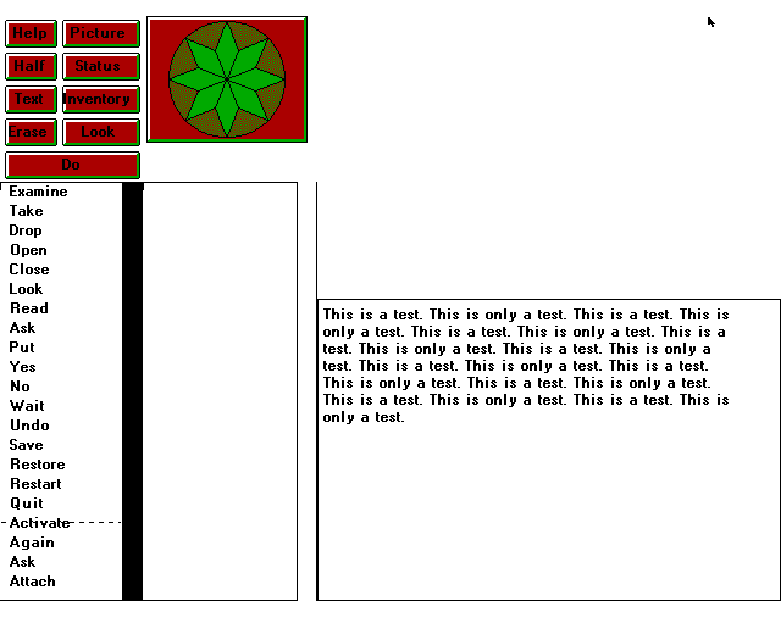Welcome to 2023, everyone. It's now mid-month in January, and I'm back from my long overdue Christmas holidays. Unfortunately :). Whilst I did end up having to spend some of my time taking care of work, I still got significant time to rest, read some novels and, of course, muck around with ScummVM stuff :). As with several previous years, I mostly ended up fiddling around with my disassembly of the early Legend games, and trying to re-implement them in ScummVM.
Thankfully, I was finally able to make some proper progress this year. Working further on my disassembly of the first Gateway game, I started a new iteration of the Legend engine in ScummVM using the latest meta engine/detection code, and gradually pulled in the work I'd previously done in the prior version of the engine. Then using it as a basis, I started implementing the code for the main text window. This included all the logic for caching text, line wrapping, and the -MORE- indicator. When it was done, I finally had the basis for displaying game messages.
Once that was done, for the first time, I started looking at the actual engine implementation. And I made progress, stumbling on a set of methods that implement what seemed like a basic C++ class hierarchy in C, with a table of 734 "objects" that were each one of eight different categories/types. Each type having a given amount of currently unknown data values. The only field of these structures that is currently known is a "method index" into a table of functions. Whilst the bulk of objects have a unique function, there are a few that don't have one, or share the same method. This is also how I know the code was a manual implementation of classes, since the function for getting the method index is basically a big switch statement that reads the appropriate offset, which is different for each category. If it was proper C++, they'd have a common base class and the field would be the same for all of them.
And these methods being pointed to.. what are they? It seems to be nothing less than all the per-game custom logic. With a bit of experimentation, I found that the first category was for rooms. Changing rooms in game is basically a matter of changing the room object being pointed to, and executing some code in the room for entering it. There's a global "room object num" that has the starting room by default, but by changing the value during startup in the DosBox debugger, I was able to change the room I started in.
Funnily enough, I tried changing the "room" to one of the other category types, and realized that it's type was for items. It seems the core engine has some resiliency, since by setting it to the item, the game told me that I was now "in" the item, as if it were a room :). Presumably, the other categories may represent other types of game entries, like non-inventory scenery or room exits, and their internal functions will have the logic for looking at items, moving to new rooms, etc.
This is all a big deal, since it means that when I have time free to work on it, I now have a solid starting point for figuring out game logic, and the methods they call in the engine to do the various things. Once I spend a bit more time figuring out the sentence parser, I'll be able to rapidly progress in finally supporting the Gateway game and, likely in the future, other early Legend games as well. Though it's going to be a pain having to manually implement and test each and every object function in each game. It's a good thing I have the patience to do that kind of thing. Though come to it, if I figure out all the engine methods the game calls, maybe Ghidra can assist in quickly producing readable C code.
As a final treat, a screenshot of the current engine. The listbox, font drawing, and other elements were pulled in from work done in prior years, and they still need work. Mostly, I focused on the text area, and better understanding how the game works:
